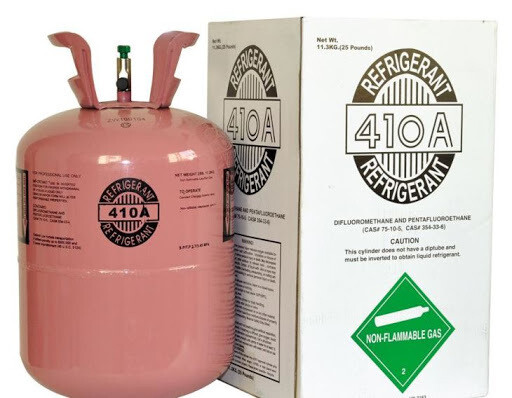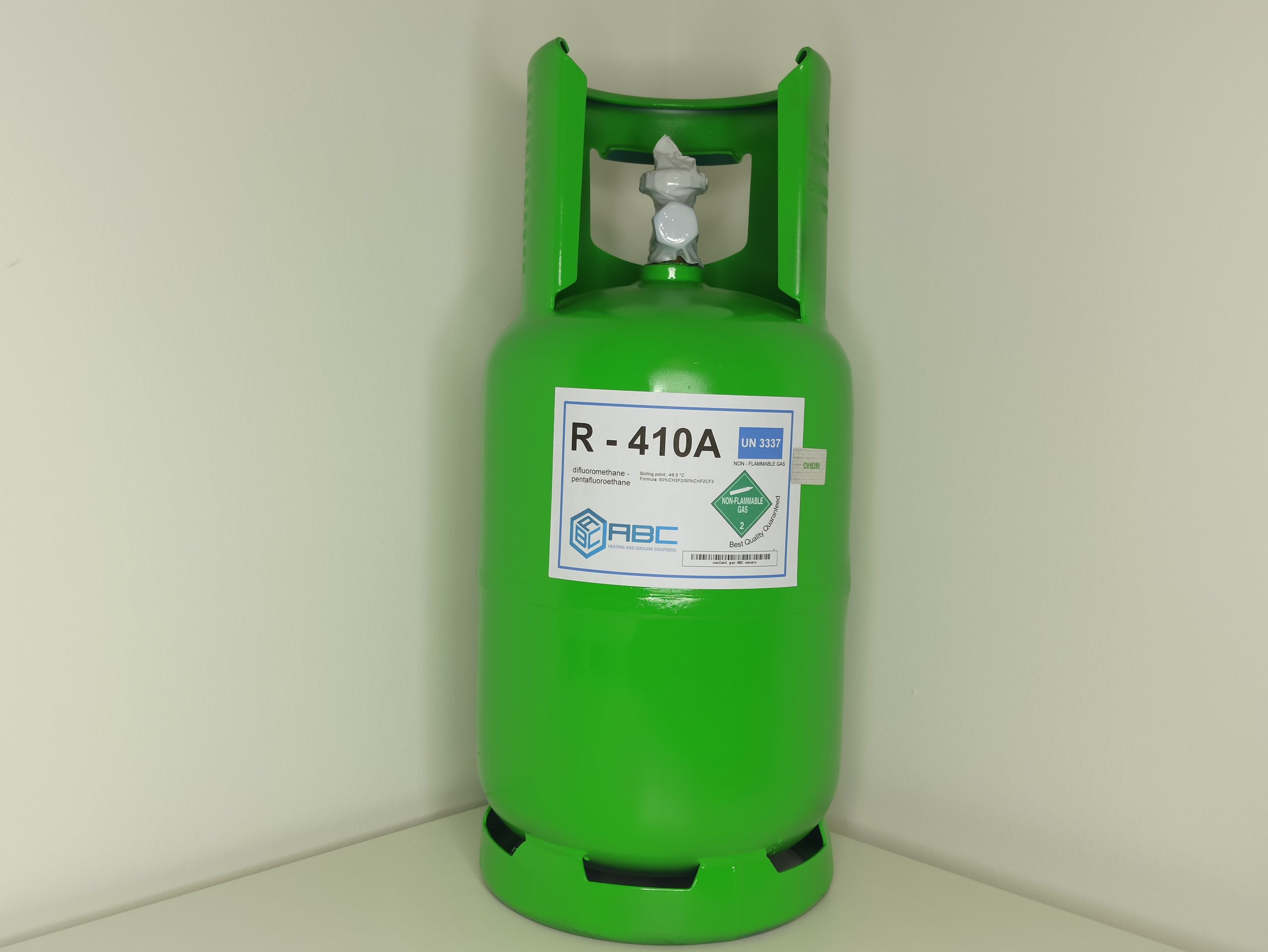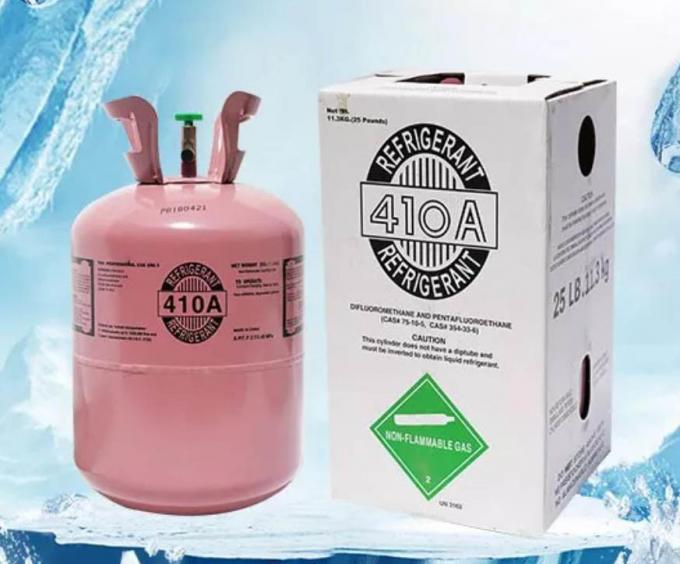Where Can I Buy 410a Refrigerant Near Me

Imagine this: It's the peak of summer, the sun is blazing, and your air conditioner decides to take a vacation of its own. Instead of icy cool air, you're greeted with lukewarm breezes. The dreaded thought crosses your mind: "Could it be the refrigerant?" Many homeowners immediately jump to the conclusion that they need to buy 410a refrigerant, but hold on! Before you rush out, let's explore how to properly diagnose the problem and when it's absolutely necessary (and legal) to call in a professional.
Understanding 410a Refrigerant and the Basics
410a, also known as Puron, is a common refrigerant used in modern air conditioning systems. It's designed to absorb heat from your home and release it outside, creating that cool and comfortable environment we all crave. However, handling refrigerants isn't as simple as topping off your car's windshield washer fluid. There are regulations and safety precautions to consider.
Important Note: Purchasing and handling 410a refrigerant often requires EPA certification. We'll discuss this in more detail later. This article provides information for diagnostic purposes and to help you understand when professional help is needed. Attempting to handle refrigerant without proper certification and equipment can be dangerous and illegal.
Step 1: Diagnose the Problem - Is it Really a Refrigerant Leak?
The first and most crucial step is to determine if low refrigerant is actually the culprit. Many other issues can mimic the symptoms of a refrigerant leak.
Check the Obvious:
Before diving deep, let's eliminate the simple fixes:
- Thermostat Settings: Is your thermostat set to "Cool" and at a sufficiently low temperature? Make sure it's not in "Fan Only" mode.
- Air Filter: A clogged air filter restricts airflow, making your AC work harder and less efficiently. Replace it with a clean filter. This is the most common cause of poor cooling!
- Circuit Breaker: Check the circuit breaker for your AC unit. Is it tripped? If so, reset it. If it trips again immediately, call an electrician.
- Outdoor Unit: Make sure the outdoor unit (condenser) isn't blocked by debris like leaves, branches, or overgrown plants. Clear away any obstructions.
Identifying Potential Refrigerant Leak Symptoms:
If the simple fixes don't work, look for these signs that might indicate a refrigerant leak:
- Weak Airflow: Is the airflow from your vents noticeably weaker than usual?
- Warm Air: Are you getting lukewarm or warm air instead of cool air?
- Icing on the Evaporator Coils: Locate the indoor evaporator coil (usually inside the air handler). If you see ice forming on the coils, it could be a sign of low refrigerant. Turn off the AC immediately if you see ice to prevent further damage! Let the ice melt completely before proceeding.
- Hissing or Bubbling Noises: You might hear a hissing or bubbling sound coming from the AC unit or refrigerant lines. This could indicate a leak.
- Higher Energy Bills: A refrigerant leak forces your AC unit to work harder, leading to increased energy consumption and higher electricity bills.
Step 2: Safe DIY Checks (Without Touching the Refrigerant!)
Even without handling refrigerant, you can perform some safe DIY checks to gather more information.
Visual Inspection of Refrigerant Lines:
Carefully inspect the copper refrigerant lines that connect the indoor and outdoor units. Look for:
- Oily Residue: An oily residue near connections or along the lines could indicate a leak. Refrigerant leaks often leave behind a greasy film.
- Damage or Corrosion: Check for any signs of damage, corrosion, or kinks in the lines.
Checking the Condensate Drain Line:
A clogged condensate drain line can prevent proper cooling and mimic some symptoms of a refrigerant leak. Locate the drain line (usually a PVC pipe near the indoor unit) and make sure it's clear.
- Check for Clogs: Disconnect the drain line and use a wet/dry vacuum or a stiff wire to clear any clogs.
- Pour Vinegar: Pour a cup of white vinegar down the drain line to help prevent future clogs.
Step 3: When to Call a Professional - This is Critical!
Under NO circumstances should you attempt to add refrigerant yourself without proper EPA certification and the right equipment. This is not only illegal in many areas but also extremely dangerous. Refrigerant can cause frostbite, asphyxiation, and other serious health problems.
You MUST call a qualified HVAC technician if:
- You suspect a refrigerant leak based on the symptoms described above.
- You see oily residue or damage on the refrigerant lines.
- You are not EPA certified to handle refrigerants.
- You lack the necessary tools and equipment to safely handle refrigerants.
- You are uncomfortable or unsure about any part of the troubleshooting process.
A qualified HVAC technician has the tools, training, and certification to:
- Accurately diagnose the refrigerant leak.
- Locate the source of the leak.
- Repair the leak properly.
- Safely recharge the system with the correct amount of 410a refrigerant.
- Ensure the system is operating efficiently and safely.
Finding a Qualified HVAC Technician "Near Me"
Finding a reputable HVAC technician is crucial. Here's how to find one "near me":
- Online Search: Use search engines like Google or Bing and search for "HVAC repair near me" or "air conditioning repair [your city]".
- Online Directories: Check online directories like Yelp, Angie's List (now Angi), or HomeAdvisor for local HVAC contractors.
- Referrals: Ask friends, family, neighbors, or colleagues for recommendations.
- BBB (Better Business Bureau): Check the BBB website for ratings and reviews of HVAC companies in your area.
Questions to Ask an HVAC Technician:
Before hiring an HVAC technician, ask these important questions:
- Are you licensed and insured?
- Are you EPA certified to handle refrigerants?
- Do you offer a warranty on your work?
- Can you provide a detailed estimate of the cost of repairs?
- What is your experience with 410a refrigerant systems?
The (Limited) DIY Scope: What You *Can* Do
While handling refrigerant is strictly off-limits for non-certified individuals, there are still some DIY tasks you can perform to help maintain your AC system and potentially prevent future problems:
- Regularly Replace Air Filters: Replace your air filter every 1-3 months, depending on usage and air quality.
- Clean the Outdoor Unit: Periodically clean the outdoor unit (condenser) by removing debris and gently spraying it with a garden hose. Turn off the power to the unit before cleaning!
- Trim Vegetation: Keep vegetation trimmed back from the outdoor unit to ensure proper airflow.
- Keep Vents Clear: Make sure furniture and other objects are not blocking air vents inside your home.
- Schedule Regular Maintenance: Consider scheduling annual maintenance with a qualified HVAC technician to inspect and tune up your system.
Why You Can't Just "Buy 410a Refrigerant" Like Other Supplies
There are several crucial reasons why purchasing 410a refrigerant isn't as simple as buying other household supplies:
- Environmental Protection: Refrigerants like 410a can contribute to ozone depletion and global warming if released into the atmosphere. Regulations are in place to minimize these environmental impacts.
- Safety Concerns: Handling refrigerants requires specialized equipment and knowledge to prevent personal injury. Refrigerant can cause frostbite, asphyxiation, and other serious health problems.
- EPA Regulations: The Environmental Protection Agency (EPA) regulates the sale, use, and disposal of refrigerants. In many jurisdictions, you must be EPA certified to purchase and handle 410a refrigerant.
- Proper Disposal: Leaked or waste refrigerant must be disposed of properly to prevent environmental damage. Certified technicians have the equipment and knowledge to recover and recycle refrigerant.
- System Performance: Adding the wrong amount of refrigerant or mixing different types of refrigerant can damage your AC system and reduce its efficiency.
Where *Can* I Buy 410a Refrigerant? (For Certified Technicians Only!)
If you are a certified HVAC technician, you can purchase 410a refrigerant from:
- HVAC Supply Houses: These are specialized stores that sell HVAC equipment and supplies to contractors.
- Online Retailers: Some online retailers sell refrigerants to certified technicians, but be sure to verify their credentials before purchasing.
- Wholesale Distributors: These distributors sell HVAC equipment and supplies in bulk to contractors.
Remember: You will need to provide proof of your EPA certification to purchase 410a refrigerant.
Preventative Measures to Minimize Refrigerant Leaks
While refrigerant leaks can happen, there are steps you can take to minimize the risk:
- Regular Maintenance: Schedule annual maintenance with a qualified HVAC technician to inspect and tune up your system.
- Proper Installation: Ensure that your AC system is installed correctly by a qualified technician.
- Avoid Physical Damage: Protect the outdoor unit from physical damage by keeping vegetation trimmed back and avoiding contact with objects.
- Prompt Repairs: Address any issues with your AC system promptly to prevent them from escalating into larger problems.
Final Thoughts: Prioritize Safety and Expertise
While DIY projects can be rewarding, working with refrigerants is best left to the professionals. Your safety, the environment, and the longevity of your AC system depend on it. Focus on the DIY tasks you *can* safely perform, like changing air filters and cleaning the outdoor unit, and always call a qualified HVAC technician when you suspect a refrigerant leak or any other serious AC problem. By understanding the basics of 410a refrigerant and knowing when to seek professional help, you can keep your home cool and comfortable all summer long.










